What makes a tall animal tall? Is it the large head, long neck or a long tail? What about long legs, does it make an animal taller?
Yes, Indeed long legs are more important than any other parts as they contribute more height to a tall body. Right! Let’s imagine a giraffe or elephant, stop, let’s see with a picture and explanation.
In this article, We shall look at Animals with Long Legs across the world and reasons for having long legs .
Table of Contents
Cute Animals With Long Legs
Gerenuk

The gerenuk, also known as the giraffe gazelle, is a long-legged antelope in the family Bovidae and is found in East Africa and other places.
They have long limbs making them about 3.5 feet (1.5 m) taller, males are slightly taller than females. The head-body measures about 55-65 inches. Its long legs enable them to achieve a speed of about 56 km/h.
To browse and feed on tall bushes that are located about 6-8 feet in height, they will stand on their hind limbs in a vertical manner, while also trying to pull the branches down through their forelimbs.
Giraffe
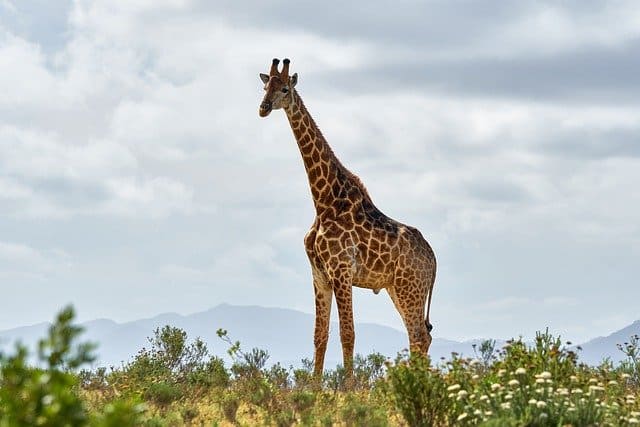
The giraffe is the tallest existing mammal on the land that belongs to the family Giraffidae and is found in East Africa, Serengeti National Park, the Amboseli National Park, Southern Africa, and other places.
Giraffes have the longest legs compared to any other animals living today. Its long legs can grow about 72 inches(6 feet) which are relatively equal to a man’s average height.
These long legs can achieve a speed of 51 kmph for shorter distances and 16 kmph over long distances, do not get fatigued thus they can stand hours together and are strong enough to kill a lion through its powerful kicks.
Interestingly, They can fall asleep or sleep while standing to avoid predator attacks- that’s amazing. Along with long legs, they also possess a long hoof about 1 foot in length- that’s really driving me crazy.
Elephants

Elephants, including African and Asian elephants, are the largest known and currently living mammals on the land that belongs to the family Elephantidae and are distributed in the subtropical regions of Africa and Asia.
The elephant is the largest land animal currently living with us. They possess bulky, strong, and long legs or simply large legs, which makes their overall height about 3 m (9.8 feet)(Asian elephant: 2.7 m, African bush elephant: 3.1 m) and enable them to reach a speed of about 40 kmph.
Elephants including African and Asian elephant have relatively longer hind limbs (back legs) than their forelimbs(front legs), knee in back legs only, while its all four legs have flat feet, large pads, toenails rather than hooves like other animals, that all work-like shock absorber and also make them walk on the tips of their toes without making noise.
Interestingly, Its heavy legs are sensitive enough to analyze the ground rumbles, and other elephants foot vibrations away from them.
Camel

Camels, including one-humped camel, two-humped camel, and others, have long legs that are about 5 feet in length that can bear 300-1,000 kg of body, and also capable of carrying the extra cargo weight. Its strong legs also enable them to achieve a speed of about 65 kmph for shorter distances and 40 kmph over long distances, which do not get fatigued easily as they are adapted to travel a longer distance in the hot desert giving them the name “ships of the desert.”
These desert animals have padded feet that end with a hard nail that is sometimes mistaken as a hoof, while its end feet are divided into half that are joined by a webbing that acts as pads such that they’ll spread and flatten upon stepping on the sand to avoid sinking in the sand.
Interestingly, They are capable of kicking in all four directions through their long legs.
Alpaca
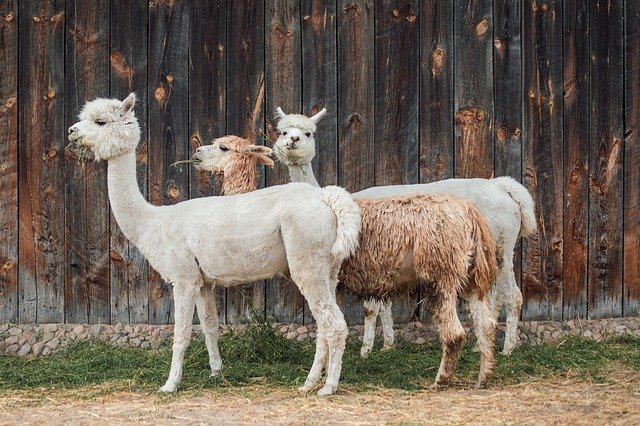
The alpaca is a species of camelid and a mammal in the family Camelidae that are found in Peru, Bolivia, and other places as well.
These cute-looking mammals have long legs that are responsible for their height about 40 inches. Its long legs also enable them to reach a speed of about 35 mph(56 kmph).
Unfortunately, Its legs can bear their own body weights but not more, so one should not ride or even try to sit on alpacas as its leg bones are not strong enough to bear extra cargo like the camels. According to alpaca breeders, riding an alpaca is animal abuse.
Emu
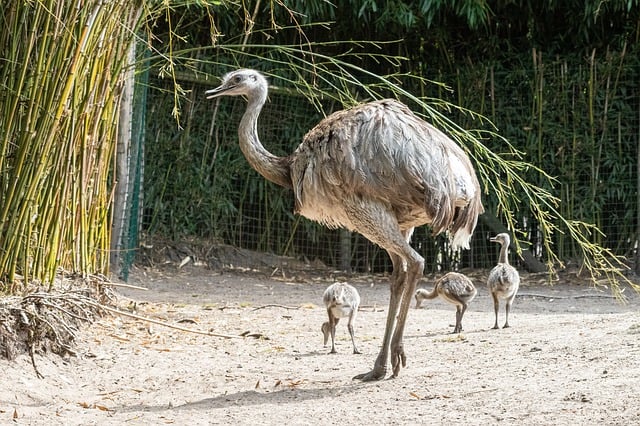
Emu is the second largest bird and also a flightless bird that belongs to the family Casuariidae and is found in Australia and other places.
It is the large and cute bird which has long legs that are responsible for a total height of about 5.5-6 feet that enable them to attain a speed of about 50 kmph due to the presence of a highly specialized pelvic limb. Its feet have large claws that they use to attack prey by pressing and kicking.
Interestingly, Emu birds are the only birds to have calf muscles.
Kangaroo

The kangaroo is the largest marsupial in the family Macropodidae that are found only in Australia.
They have muscular and powerful hind legs that make them reach an overall height of about 3-8 feet depending on the species of kangaroo. An adult and big species of kangaroo with its long legs can leap as much as 30 feet and can jump as high as about 6 feet. That means they can jump over a man with 5-6 feet height.
Surprisingly, They can attain a speed of about 35 mph(56 kmph) through their long and muscular legs. They also use their long legs combined with strong muscular tails as supporting and balancing while fighting against other kangaroos and also during kicking other animals if they felt threatened or annoyed.
A kangaroo kicks so powerful that it can break intruder bones quickly due to the presence of the largest muscles in its hindlimbs.
Ostrich
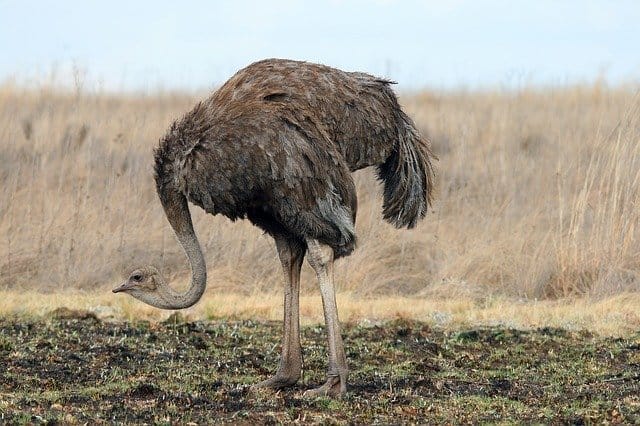
Ostrich is a flightless large bird in the genus Struthio and order Struthioniformes and is found in savannas, Sahel, Africa, and zoos of many countries.
These large birds have the longest legs of any bird that can reach up to 24 inches(2 feet) long. Its legs help them attain a speed of 43 mph (69kmph) for shorter distances and 60 kmph over long distances, and in a stride, they could cover a distance of 14 feet- that’s a great distance. Interestingly, they use their wings to change their running direction.
Its muscular legs act as a weapon against predators, intruders, and other animals that try to steal its eggs. Thus they can deliver a powerful kick that could break bones or rip the flesh through their large claws.
Spider monkey
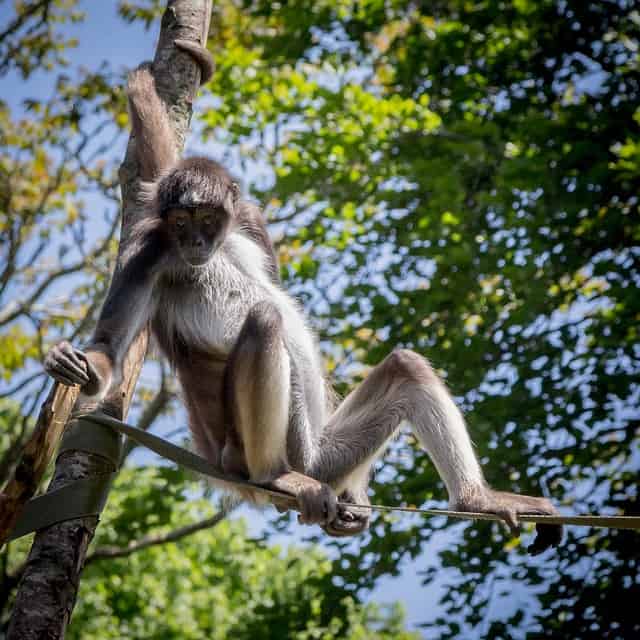
The spider monkey is a species of monkey that belongs to the New World monkeys in the family Atelidae and is found in Central and South America, Southern Mexico, and Brazil.
These monkeys have disproportionately long limbs making them one of the largest New World monkeys as they reach a height of about 79 cm (31 inches). Their long limbs enable them to attain a speed of about 35 miles per hour(56 kmph). Its legs used to climb a tree, eat fruits, jump between branches and trees, and also defend themselves along with its mouth.
They can climb a tree with ease since they possess long legs supported by a prehensile tail.
Cassowaries
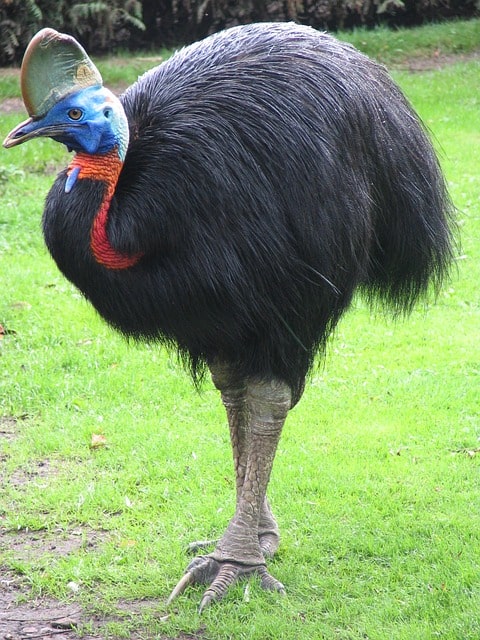
A Cassowary is a flightless large-sized bird in the order Casuariiformes that are found in New Guinea, East Nusa Tenggara, the Maluku Islands, and Australia.
It is one of the largest and aggressive birds that have long legs responsible for a body height of about 5.8 feet (170 centimeters). Its powerful legs also support jumping a distance of about 5-7 feet and help to attain a speed of about 31 miles per hour (50 kmph) and are equipped with a dagger-like claw in each toe that can penetrate to the flesh of predators upon kicking.
Like dinosaurs, these birds also have long legs and are one of the relative species to dinosaurs as they possess the casque on its head.
Secretary bird
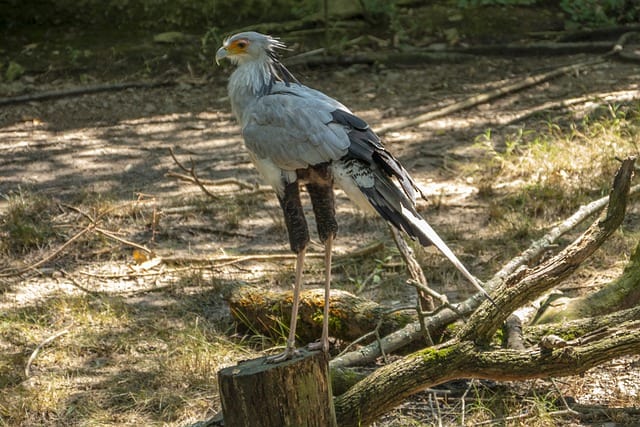
A secretary bird, also known as devil’s horse, is a land bird of prey in the family Sagittariidae and is found in Africa, the Sahara Desert, Somalia, South Africa.
These raptors have long legs that make them stand about 4 feet tall in search of prey in the tall grasses while also avoiding their prey that may be hidden in the tall grass. Its longer and slender legs enable them to attain a speed of about 3 kmph (2 mph) and also capable of traveling 30 km in a day.
Interestingly, They are identified by eagle-like bodies and crane-like legs that result in a height of about 4 feet.
Black-Necked Stilt
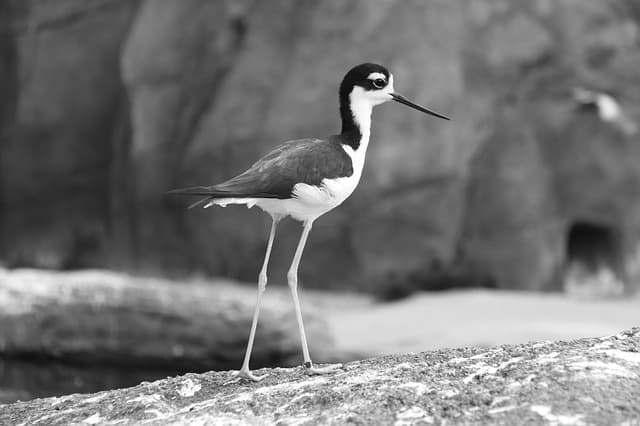
A Black-necked stilt is a shorebird in the family Recurvirostridae that has inhabited the wetlands, marshes, swamps, and flooded agricultural fields.
These species of stilt have long and slender legs that are pink in color that they use to stand in deep shallows without getting wet by water while searching for insects. Its long legs are responsible for its total height of about 1.5 feet and are also helpful in swimming and diving occasionally.
They can use its long legs for wading as it feeds on tiny insects on the surface of the water.
Land Animals With Long Legs
Alaska moose
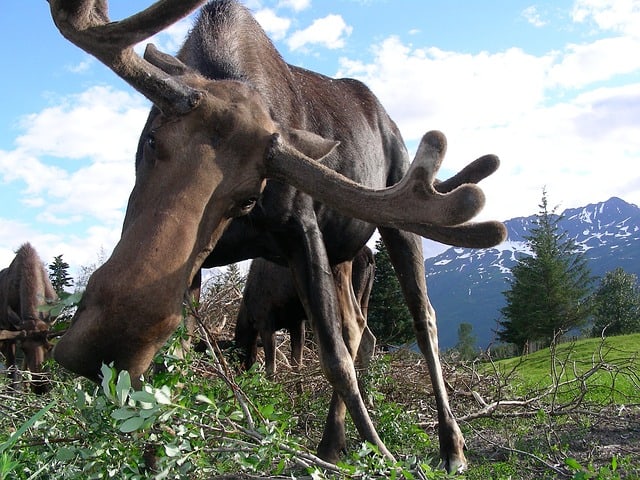
An Alaska moose, also known as Alaskan moose, Yukon moose, is a herbivorous mammal in the family Cervidae and is found in Alaska, northwestern Canada, and Western Yukon.
These animals have long pale-colored legs about 5-6 feet that end with 4.5 inches wide hoofs called snowshoes combined to contribute a total body height of about 5 to 6.5 feet, enabling a running speed of about 35 mph, swimming speed of about 6 mph. Through their long legs, they can jump a fence about 7-8 feet high and walk in the snow path without sinking as they have snowshoes.
Interestingly, Upon standing on their hind limbs by taking support through the front legs on the tree, they can reach about 13 feet.
Shire horse

The Shire is the largest and tallest species of horse in the world that belongs to a tall breed and is found in England.
They have four strong and long feet about 5 feet with long fur that provides extra warmth in cold climates and each foot ends with hooves for protection. Its long and powerful legs are responsible for a total body height of about 7 feet, and attain a speed of about 35 mph (56 kmph).
Interestingly, They can deliver a force of 900 Kg per square inch through their long and muscular legs.
American Bison
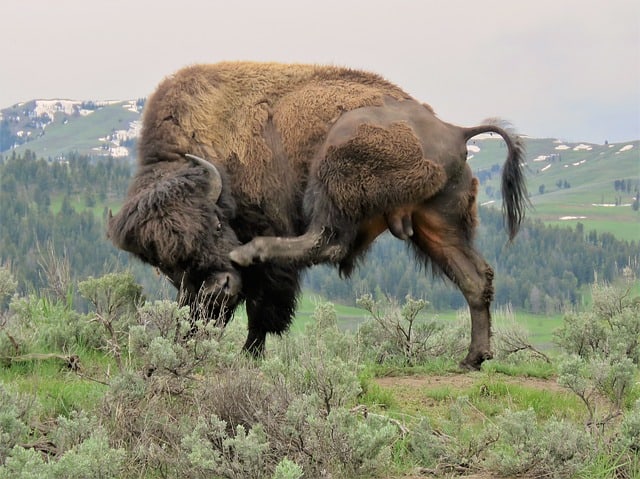
An American bison, also known as bison, American buffalo, simply buffalo, is a large-sized herbivorous animal in the family Bovidae and is found in Canada, Mexico, Europe, Poland, Belarus, Lithuania, Russia, Ukraine, and Slovakia.
It is one of the large and strong mammals that have strong and long legs about 5-6 feet that makes them grow up to a total body height of about 6-7 feet, to attain a speed of about 35 mph (56 kmph), and jump about 4-6 feet high.
Interestingly, Male bison are larger than female bison, which are about 6 feet tall and 5 feet tall respectively.
White Rhinoceros

The white rhinoceros, including the Southern White Rhino and the Northern White Rhino, is also known as square-lipped rhinoceros is the largest-sized mammal in the family Rhinocerotidae that are found in Kenya, South Africa, Namibia, Zimbabwe, and Kenya.
They have thick and long legs about 4 feet along with 3 toes in all four limbs for supporting their massive body weight, and are also responsible for a total body height of about 6 feet that helps them attain a speed of about 50 kmph.
Greater Rhea
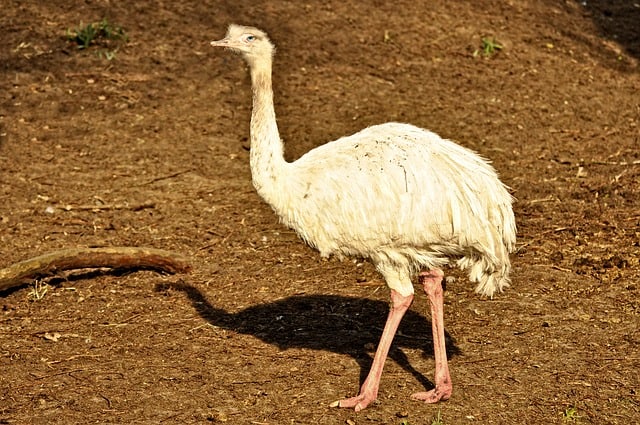
The greater rhea, also known as grey rhea, common rhea, American rhea, or ema, is a ratite(a group of flightless birds) in the family Rheidae that are found in southeastern South America, Brazil, Bolivia, Uruguay, Paraguay, and Argentina.
As flightless birds they depend on their strong legs to run and fight through their legs against predators and so on. It is the largest bird found in South America that has long legs about 2 feet and are responsible for them to reach a height of about 3-5 feet tall, and attain a speed of about 35 mph (56 kmph).
Interestingly, Its legs have three toes, while they lack a hind toe.
Sea Animals With Long Legs
Sea spider
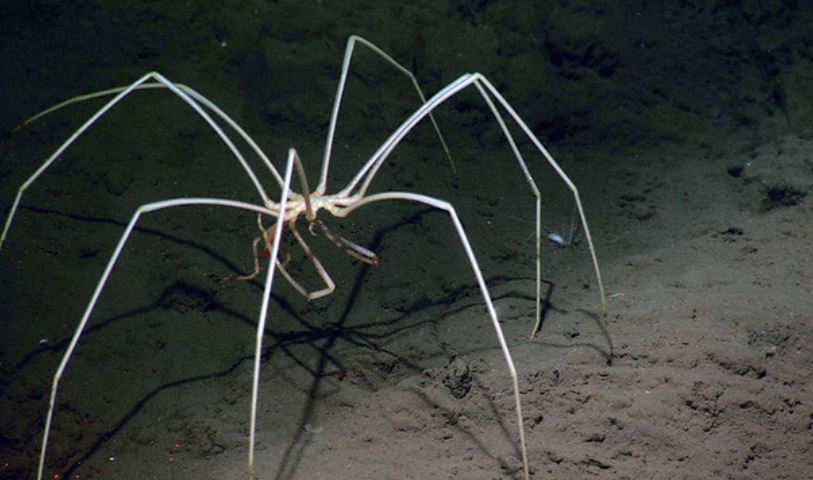
Sea spiders are marine arthropods with variable pairs of very long legs. Its legs are much longer proportionate to their bodies that enable more surface area through which they breathe.
Instead of having a traditional respiratory system, they are adapted to respire through their long legs as their legs (by a process called diffusion) are capable of absorbing oxygen that they distribute to the rest of the body. Its long legs are also used to walking on the bottom surfaces of the ocean.
Japanese Spider crab
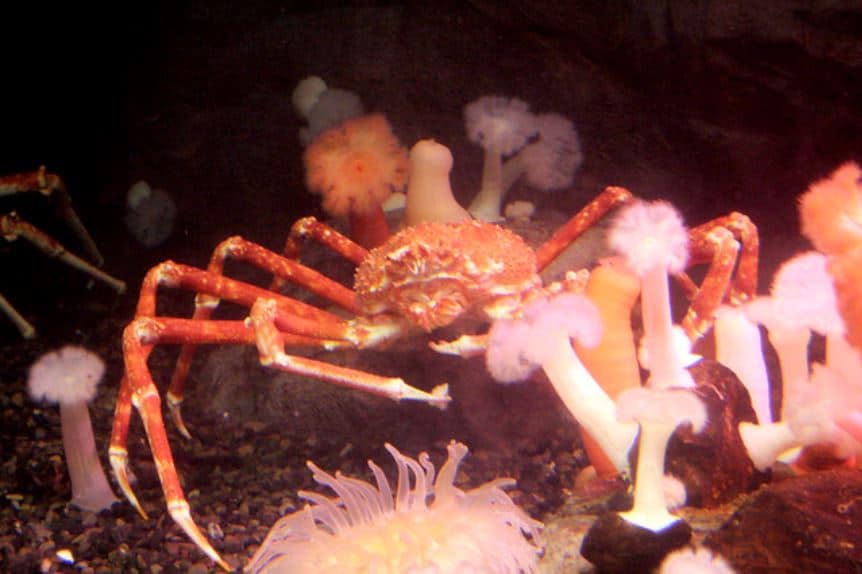
The Japanese spider crab is a species of marine crab and is the world’s largest arthropod living in the Japan oceans with the largest leg span among the arthropods.
Japanese spider crabs are called so because they look like crabs and have stubby projections with long slim legs. These large crabs can reach up to 4 m (12 feet) in size whose body weighs about 20 Kg.
Octopus

Octopus is a soft-bodied mollusc with eight-limb found in the ocean that they use for swimming, hiding, eating, catching prey, and defending themselves from predators.
These marine invertebrates have 8 long arms or limbs about 4.3 feet in length which also possess a small brain(in each of their eight arms) that is a group of nerve cells for controlling movements.
A giant Pacific octopus is thought to be the largest octopus species in the world as it can grow up to 30 feet in length.
Nocturnal Animals With Long Legs
Long eared jerboa

The long-eared jerboa is a nocturnal mouse-like rodent that also looks like the mini version of kangaroo that belongs to the family Dipodidae and are found in the Palearctic ecozone, Mongolia, Takla-Makan Desert, and Qing-Zang Plateau, and western China.
These cute-looking creatures have long legs along with a long tail, and large ears. Its extraordinarily long hindlimbs have been adapted to the desert habitat and are used for jumping, attaining a speed of about 24 kmph(15 mph).
While its long back legs (hindlimbs) have large feet that can move like a kangaroo and possesses tufts of bristly hairs. It has long hind limbs that are much longer than the forelimbs.
Hippopotamus
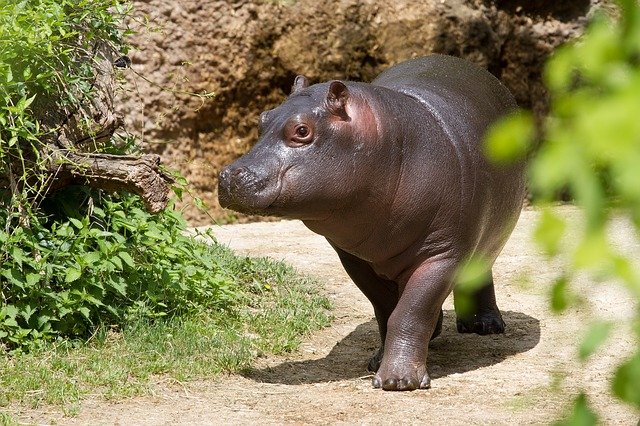
The hippopotamus, also known as hippo, water-horse, common hippopotamus, river hippopotamus, is a large-sized mammal with nocturnal tendency that lives in both land and water belongs to the family Hippopotamidae and is found in Uganda, Tanzania, Kenya, Ethiopia, Somalia, Sudan, Gambia, and South Africa.
Currently, Hippo is the third-largest land mammal known to us after the elephant and rhinos. These have long legs about 4-5 feet with each leg bearing four toes in it. This combination of long legs along with toes contributes to the total body height of about 5-6 feet height depending on the sex, age or species of hippo they belong to, and also helps to attain a speed of about 50 kmph on land and 8 kmph in water.
Surprisingly, In search of food, they can travel about 10 km in a day.
Cape Buffalo

The African buffalo, also known as Cape buffalo, is a large-sized nocturnal mammal of Africa belonging to the family bovidae and is found in Central and West Africa.
This animal, the African buffalo, found to have long legs that are about 3-4 feet long supporting its heavy body while also contributing to a total height of about 5 feet, attain a speed of about 35 mph (56 kmph).

